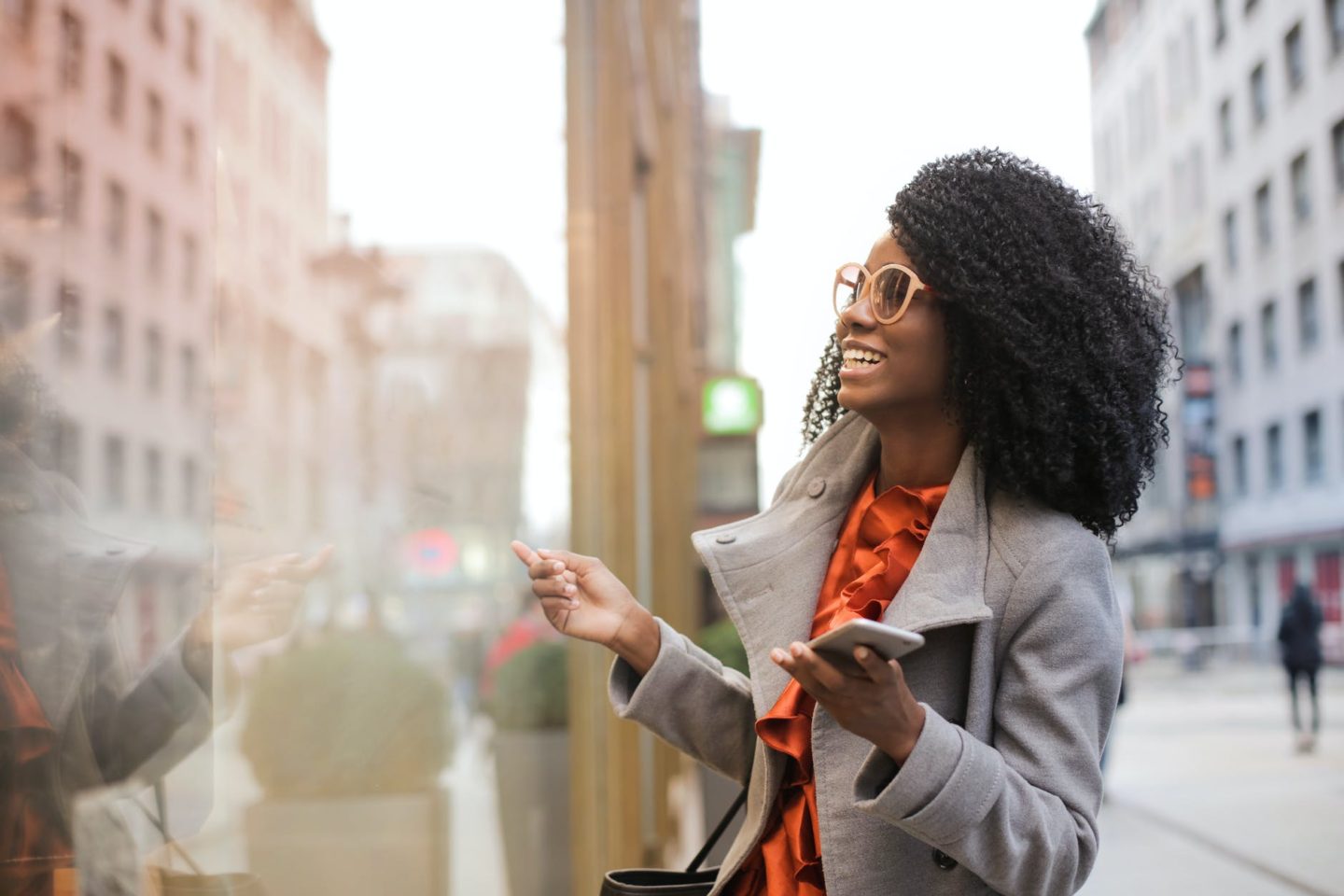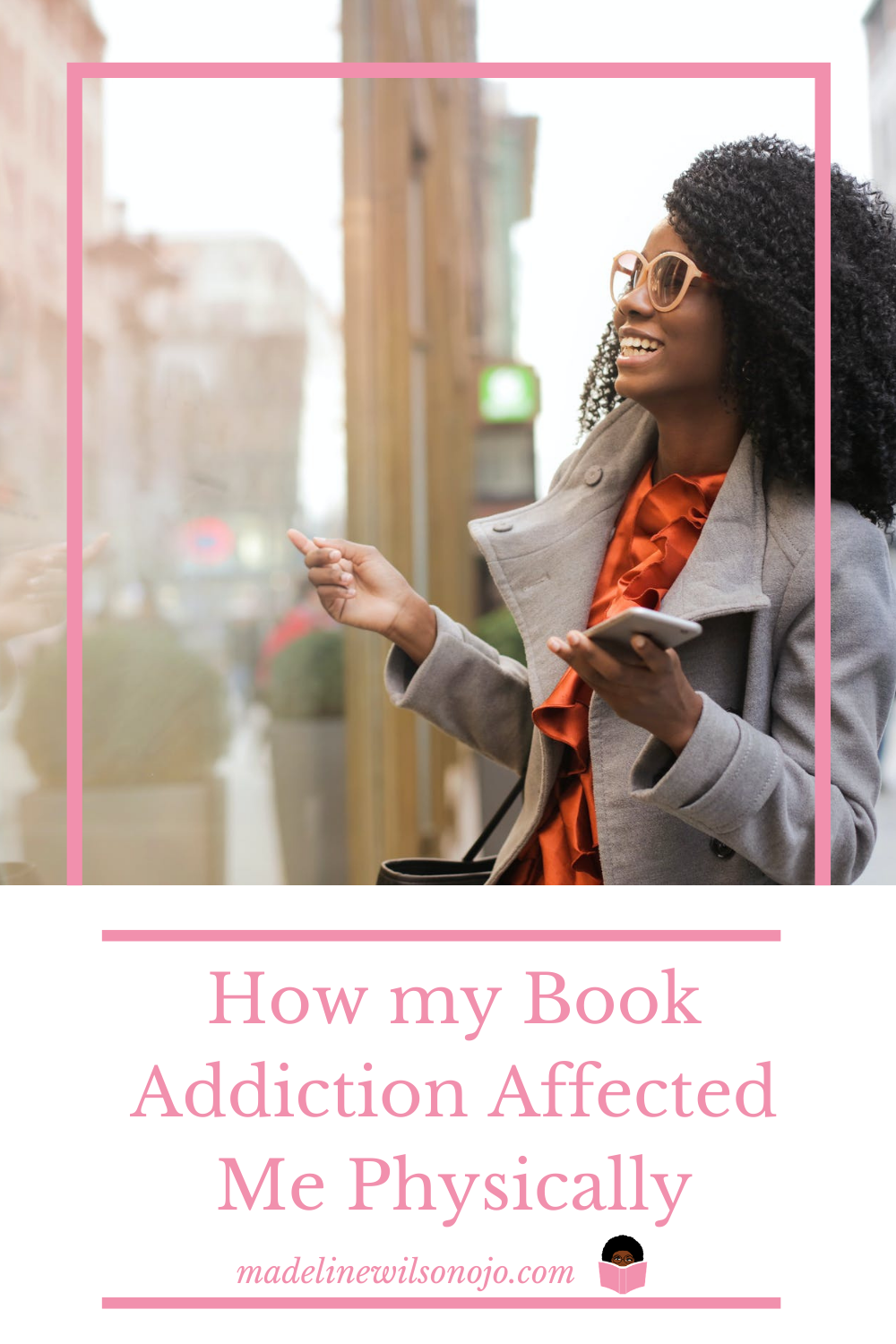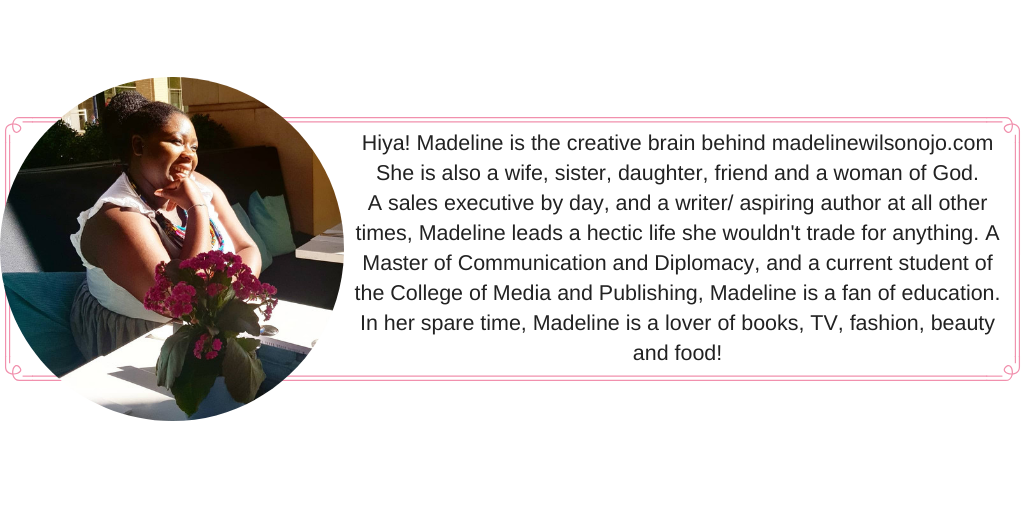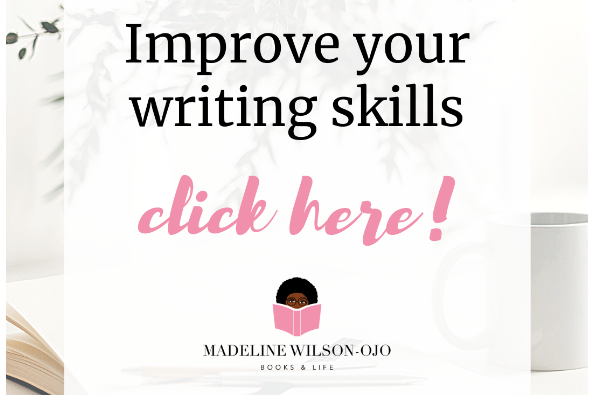One thing I have noticed is that every hobby (or necessity) you engage in frequently affects you for better and for worse. For example, runners will develop good stamina but may suffer from ankle injuries. For me, it was my eyes. As much as I love getting myself lost in a book, I believe the hours spent with my eyes glued to the pages, that and genetics, have contributed to my dependency on glasses and contact lenses.

How did my book addiction affect me physically?
Believe it or not, as a child I wasn’t very good at making friends, so books filled my world. I loved to read, and would often stay up late into the night with my head buried in the pages until my mother would come into my room unannounced and switch the light off. Even in the moonlight, I squinted and struggled to make sense of the words on the page. It took me a good few years to detach myself from this habit, and by the time I did, I was already on my third pair of glasses.
You may also want to read: Smash Your Reading Goals on a Budget
You may also want to read: Seven Ways to Rekindle Your Love for Reading
Are you a glasses wearer or a contact lens user yourself? Scroll down to the comments and let me know! If you are not, do you wear them for fashion? Or do you suspect that you may need to invest in a set of a prescription lens? Keep reading.
Signs you may need reading glasses
There are a few clear signs that you may need to buy yourself a pair of reading glasses. These include:
- Squinting while reading
- Having to distance yourself from the material you’re reading (either by holding a book further away or leaning away from a computer screen).
- Frequently developing headaches after long periods of reading or getting sore eyes.
- Getting easily tired while reading and struggling to concentrate.
Reading books under a lamp or having to use your phone’s torch to see what you’re reading.
Getting an eye test could be a way of confirming whether you need reading glasses. It’s possible that you may be suffering from other eye conditions like cataracts if you constantly experience blurriness or often see glowing circles. An optometrist will be able to diagnose any condition that you have.
What causes longsightedness?
Longsightedness often develops naturally and may not necessarily be caused by bad lifestyle habits. It’s commonly caused by the eyeball changing shape, the cornea becoming less curved or the lens becoming thinner.
Hyperopia is a form of longsightedness that is largely genetic. All babies are born with this condition – vision usually sharpens up within several months, but for some people, vision can stay at a reduced level. If you have this condition, you are likely to require glasses from childhood.
Presbyopia meanwhile is a form of longsightedness that tends to develop with age – usually after the age of 40. This is when the lens of the eye loses its elasticity and flexibility, making it much harder to focus on objects that are nearby. Most people will develop this form of longsightedness at some point in their lives, although it can be to varying degrees.

What happens if you don’t wear glasses?
Your vision may not necessarily get worse if you don’t wear glasses. However, you will constantly be straining your eyes, which could lead to frequent headaches and exhaustion. If your vision does start to deteriorate further, you will likely find yourself struggling harder and harder to read, which could make simple reading tasks slow. This is not something you want to have to go through if you’re a voracious bookworm.
Wearing glasses is an easy fix and will allow you to enjoy reading without squinting and straining. If you don’t like the idea of wearing glasses, other forms of corrective vision may also be possible such as contact lenses and laser eye treatment (these are discussed later on…)
Choosing the right prescription
Reading glasses are available in a variety of prescriptions, catering to all different levels of vision loss. The best way to find out your prescription is to visit an optician and get an eye test. For longsightedness, this usually involves reading a card containing increasingly smaller print until it becomes too small that you can no longer read it.
Of course, it’s possible to work out your own prescription without getting an eye test. Many supermarkets and drug stores contain racks of cheap reading glasses in a variety of prescriptions – by trying on different prescriptions you can find the right one for you.
Reading glasses prescriptions are measured in a unit called diopters. The lowest strength you can get is usually 1.00 – this then increases in intervals of 0.25 as the strength increases. 4.00 is the highest strength of reading glasses that you can buy. You can usually find the prescription on a label attached to the frame or it may be printed onto the frame itself.
Do you need bifocals?
Some people suffer from both longsightedness and short-sightedness. The latter can develop a lot earlier – sometimes in teenage years or in early adulthood. If you have this condition you may already have glasses to help you see things far away. If you are also diagnosed with longsightedness, you then need to decide whether to buy a separate pair for reading or a pair of ‘bifocals’.
Bifocals contain lenses that can magnify things both far away and nearby. The top half of the lens generally magnifies things far away, while the bottom of the lens magnifies things nearby. Bifocals can take some getting used to but are generally the best option if you suffer from both eye conditions rather than having to swap between two pairs of glasses.
Other lens features to consider
When choosing lenses on glasses, it could also be worth considering coatings. Some of these coatings can give your glasses added benefits. For instance, an anti-reflective coating can prevent lens glare, which can be more useful when reading near a light or on a computer. Scratch-resistant lenses meanwhile can help prevent scratches, which could be useful if you accidentally drop your glasses. The anti-fog coating is another option that can stop your glasses from steaming up when moving from somewhere cool to somewhere warm (or while wearing a facemask). Finally, there are transition lenses, which are able to go dark in the sunlight, giving you the UV protection of sunglasses (useful if you like to read outdoors). Such coatings are an added cost – it’s up to you to decide whether it’s worth it or not.
Finding the right frame
Once you’ve established the right lens, you can then choose the frame. This tends to be the fun part of choosing glasses as it is mostly a case of personal preference.
Supermarkets and drug stores tend to sell the cheapest frames but often won’t have the greatest range or best quality. Shopping online could allow you to choose a frame from a larger selection. You can also buy frames in brick-and-mortar opticians stores – it’s here that you’ll generally pay the most for frames, however, you may be able to get measured, which could allow you to order a frame that’s just the right fit for your face.
There are speciality frames on the market. One example is sports frames that can fit more securely without slipping while doing physical activity. There are also chunky frames and rimless frames for those that want to make a statement.
If you’ve already got a pair of glasses for seeing things at a distance, you may be able to simply change the lenses to bifocals and keep the frame. This can be a great way of saving money on specs, providing that your old frame is in good condition.
Can you wear contact lenses?
If you don’t think glasses are for you, you could consider opting for contact lenses instead. Contact lenses could get rid of the inconvenience of having to carry around reading glasses everywhere – you don’t have to worry about forgetting them or losing them.
There are two types of contact lenses: daily lenses and monthly lenses. Daily lenses can be more expensive but more comfortable – they are replaced every day. Monthly lenses are able to last a month and are put into a solution at night.
If you already have shortsightedness, you could consider opting for multifocal lenses – like bifocal glasses, they are able to deal with long-distance and short-distance vision. Alternatively, you could wear a combination of glasses and contact lenses. The most common option is to wear contact lenses for distance and carry around reading glasses for when you need to read something.
Modern contact lenses are very comfortable – most of the time you’ll forget you’re wearing them. An optician will be able to guide you on how to put them in and how to take them out. This can take some getting used to if you’ve never worn contact lenses before.

Can you get laser eye treatment?
Laser eye treatment is available for those that have the genetic form of shortsightedness known as hyperopia. The treatment involves reshaping the cornea to allow light to enter the eye better. The treatment itself usually lasts no more than thirty minutes and can improve vision afterwards for years.
Unfortunately, laser eye treatment is not available for those that have age-related presbyopia. This condition is caused by a loss of flexibility and elasticity of the lens – there is no permanent treatment for this.
It’s possible that you may have other conditions beyond these. In such cases, it’s best to talk to a professional to determine whether you are a suitable candidate.
Laser eye treatment can be expensive, however, you may eventually make up the costs in glasses and contact lenses in the long run. Many people invest in it for this reason – as well as not having to deal with the inconvenience of glasses or contact lenses.
I hope you’ve enjoyed reading about how books have affected me physically, and that this has informed you in how to look after your eye health. Are you a glasses wearer or a contact lens user yourself? If you are not, do you wear them for fashion? Or do you suspect that you may need to invest in a set of a prescription lens? Let me know!

Disclaimer: this is a sponsored post and may include affiliate links.

